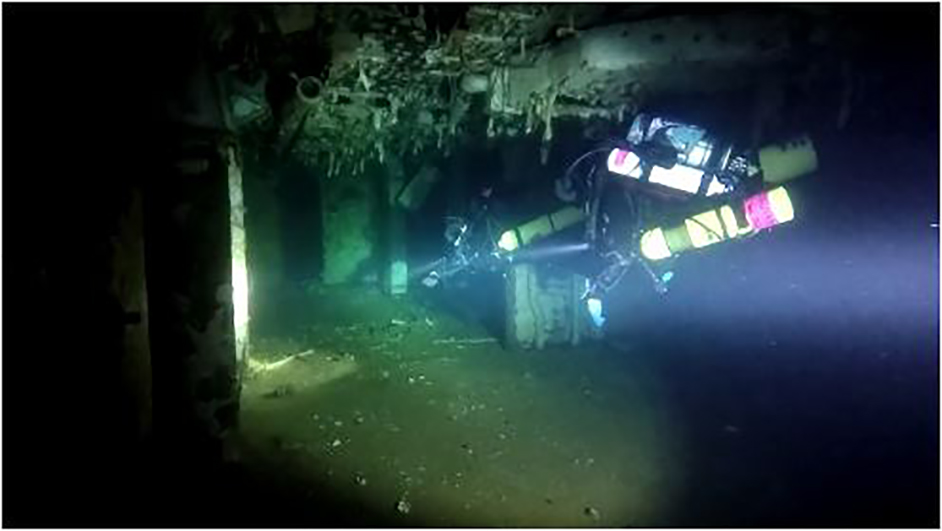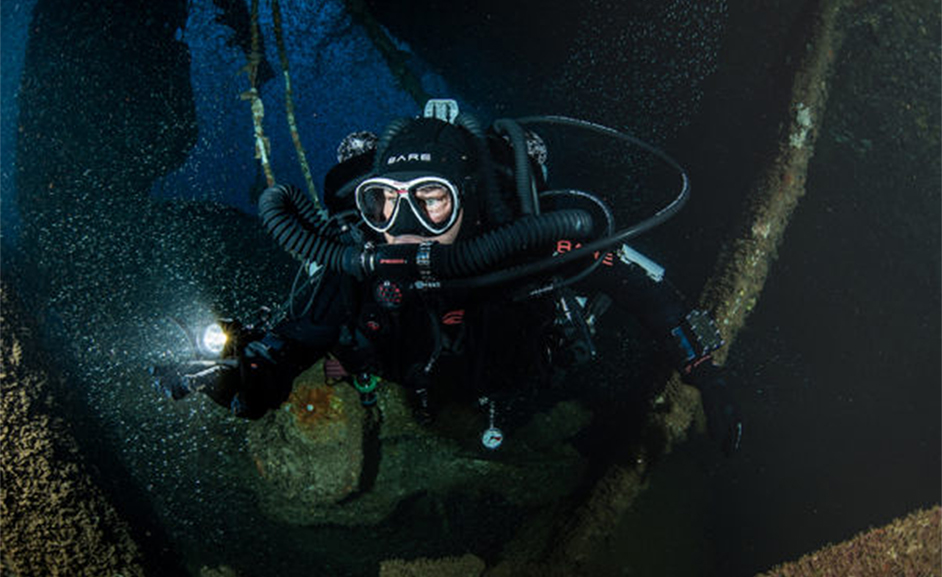To many, using a rebreather can seem like something only the best divers do. Premium costs, unfamiliar equipment and a lack of hands-on experience can make the process of starting your rebreather certification a little intimidating.
Nonetheless, the promise of longer dive times, better photographic opportunities and a much quieter overall experience make the prospect of diving with a rebreather compelling for many reasons. The research opportunities alone make the cost of admission worth it.
But just what are the best ways to get started? Are there some things to do to get primed and ready for your rebreather course? To answer this question, we turned to Hollis Rebreathers Training Director and Florida/South Atlantic Sales Manager John Conway to discuss preliminary moves on your road to rebreather education.
When initially asked what the first step is to getting certified, John half-jokingly suggested that it’s to find a Prism 2 and Hollis Rebreather Dive Center, first thing. But prying a little deeper, John was able to offer a few tips—applicable in and outside the classroom—for folks getting started.

1) Get Trained Up
Jumping into the deep end with rebreathers without enough experience under the water can be unwise, says Conway.
“If you’re a new open water diver,” he explains, “you need to get some diving experience and you need to get some additional certifications, such as advanced open water, rescue and deep diver.”
Although it’ll slow down your ultimate arrival time at rebreather competency, committing to more training will provide the foundation to be a safe, informed rebreather diver when the time is right.
2) Do Your Research
It’s also a good idea, Conway says, to do as much research as possible about rebreathers before taking the plunge.
“Read as many books about the subject as you can,” he encourages. “People just need to be comfortable [before rebreather training], and should probably have between 50 to 100 dives under their belt before they even look at rebreathers.”
3) Dive in a variety of environments
Rebreather use, by its very nature, involves a lot of multitasking. For this reason, Conway insists that becoming comfortable in a variety of conditions, situations and environments is essential before embarking on your rebreather education.
“My guidance is to get exposed to different diving environments,” he says. “Go in cold water. Go in warm water. Go to your quarry. Go to your lake. Dive on a wreck. One of the things when you’re diving a rebreather is you’re multitasking. So, you’re controlling the machine while open-water diving. We use the term, ‘you’re flying the rebreather,’ just like you’d be flying an airplane. So you wanna be comfortable and have mastery of your own skills before diving a rebreather.”
4) Start Slow
A rebreather gives you more options, Conway explains, so in many ways a rebreather can actually be a safer device because it gives you more ways to make it back to the surface if a problem arises.
“In order to manage anything, you’ve gotta be comfortable,” he says. “It’s just like when you’re starting out driving at 15. Everyone harps on you to go slow, don’t drive on the superhighways. Before you go and become a racecar driver or something like that you’ve gotta gain some experience, get exposed to different environments and try different things.”
5) Save Some Money
Similar to having a car or motorbike, owning, maintaining and using a rebreather can be an expensive proposition. However, like most things in life, you get what you pay for, and Conway asserts that the cost of entry for a rebreather can be high, but in actuality equals out to the lifespan cost of buying new open-circuit dive equipment over the span of years.
“Have a fat paycheck,” Conway says. “The capital costs are expensive upfront. [The Prism 2] is a $9K to $10K piece of equipment. So, you need to lay out $8,000 in equipment and $1,500 in training costs, upfront. If you’re going to make that commitment to a piece of equipment, you’re going to want to be confident that you’ll use it on a regular basis—to get your money out of it.”“If you’re going to be that active of a diver,” he continues, “you’re gonna need money for trips, you’re gonna need money to go diving, etc. But you’re going to spend the same amount of money in open circuit, you’re just going to acquire your open-circuit gear little by little over time instead of jumping into the pool feet first.”






















